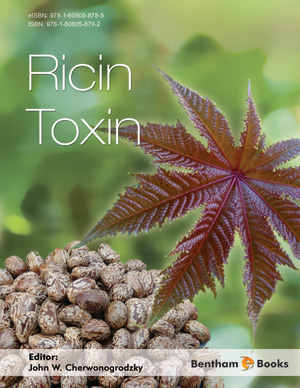Abstract
A cell-based high throughput screening assay (HTS) was established to screen the Prestwick Chemical Library for candidates that acted against ricin. Of 1120 compounds screened, only 7 were identified as ricin inhibitors. Secondary screening with cell cultures identified only ethotoin as a dose-dependent inhibitor against ricin induced toxicity. Ethotoin was further evaluated in two in vivo studies. Study 1: When mice were given intra-peritoneal injections of 5×LD50 ricin (1 μg) pre-incubated with ethotoin (1 mg), all mice survived (monitored for 14 days). In contrast, control mice without ethotoin died within 2 days. Study 2: When mice were given 2×LD50 ricin (0.2 μg) by the intranasal route and then given ethotoin by multiple oral/gavage deliveries (at 1, 2, 4, 6, 8 and 10 hr after intoxication) 40% of the mice were alive at day 14. In contrast, all control mice (those that received sterile saline instead) died between days 3-9. Hence ethotoin, given by one route (oral) could rescue some mice from ricin given by another route (intra-nasal). Our findings suggest that ethotoin, although now an abandoned anti-convulsant drug, deserves further investigation and development as a potential antidote against the ricin biothreat.
Keywords: Ricin, antidote, repurposing, drug, ethotoin, anticonvulsant, rescue.






















